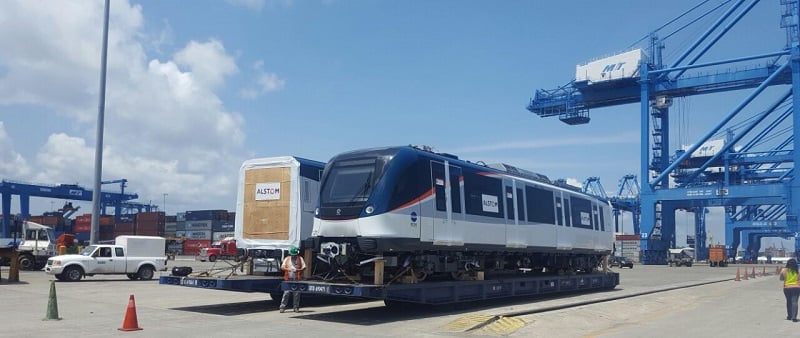Škoda Will Deliver Catenary-Free Trams to Turkey

Škoda Transportation will deliver twelve “catenary-free” trams to Turkey, as a follow-on to the delivery of sixty ForCity Classic (28T) trams to the Turkish city of Konya. The trams are also ForCity Classic, but this time they will be fitted with the newest battery-powered “catenary-free” drives, which enable the vehicles to move independently of the traction wiring, with a range of 3 km. The trams will be delivered in 2015. In total, 72 trams will be delivered to Konya with a value of 3.4 billions Czech crowns.
“We are delighted for this 20% contract extension and are pleased to supply additional trams, equipped with Skoda’s “catenary-free” package. This new order is a clear testimony of our customer’s satisfaction with the trams delivered so-far. These vehicles will be used on a new line, which has a 1.8km long section without catenary wiring. In total, we will deliver 72 trams manufactured by Škoda for the Turkish city of Konya. Moreover, by developing and manufacturing a catenary-free tram, we confirmed, one more time, that we are able to meet the short customer delivery schedule, combining the latest “nano-lithium-titanium” battery technology and competitive solutions,” says Zal Shahbaz, Sr. Vice-President of Škoda Transportation.
The first tests of the new drive took place on the trial track on the Škoda premises in Plzeň in the presence of a certified person from the Railroad Research Institute (VUZ). Testing was done on the ForCity Classic tram from the first series of sixty pieces for the Turkish city of Konya. “The tram managed to accelerate thirty times to 30 km/h for a total of 8 km without recharging. The “catenary-free” solution of Škoda means that, in practice, the tram has a range of 3 km without power from the pantograph at the speed of up to 30 km/h,” explains Milan Šrámek, Electric Product Manager of Škoda Transportation.
The battery-powered tram drive is used especially in cases when the tram needs to go into areas without catenary, for example in historical centres of cities where there are no trolleys for aesthetical reasons. The drive can also be used in case of a failure of the upper electric wiring, to move the tram away, so that it does not obstruct the flow of traffic. The batteries of the catenary-free trams are situated in special roof mounted containers, in which various types of batteries and/or super-capacitors can be placed according to the required nature of tram operation. In the case of trams for the Turkish city of Konya, Škoda is going to use high-performance batteries with nano-lithium-titanium technology. The batteries are always recharged during tram operation under the trolley in just a few minutes.
The business group Škoda Transportation has also already been manufacturing battery-powered trolleybuses for a long time. In 1998-2003, 272 Škoda trolleybuses for San Francisco were fitted with batteries, so that they could be operated independently of the trolley. The first prototype of the new generation battery-powered trolleybus was developed by the daughter company Škoda Electric back in 2003. This year, twelve vehicles in total with a range of ten kilometres at the speed of up to 50 km/h will be delivered to the Hungarian city of Szeged.
Škoda Transportation will produce a record-breaking number of 115 trams this year. In the last few months, modern trams were launched in Turkish Konya and in Hungarian Miskolc, and the first prototype of the licence vehicle was manufactured in China. The first prototypes of new trams will also be delivered to Bratislava and the Prague Transport Company will buy more than thirty of the latest state-of-the-art ForCity Alfa trams.



